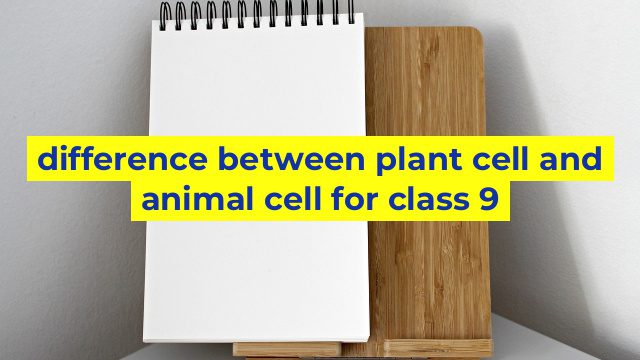Understanding the Differences between Plant Cell and Animal Cell
Cells are the basic unit of life, and they come in different shapes, sizes, and types. Two of the most common types of cells are plant cells and animal cells. While both of these cells perform similar functions, they have some fundamental differences that make them distinct from each other.
Shape and Structure
One of the most noticeable differences between plant cells and animal cells is their shape and structure. Plant cells are rectangular or square in shape and have a rigid cell wall made of cellulose around their perimeter. On the other hand, animal cells are generally round or irregular in shape and have a more flexible cell membrane instead of a cell wall.
Chloroplasts and Mitochondria
Another major difference between plant cells and animal cells is the presence of chloroplasts and mitochondria. Chloroplasts are specialized organelles found only in plant cells that are responsible for photosynthesis. Chloroplasts contain chlorophyll, a green pigment that absorbs light energy and turns it into chemical energy that the plant can use. In contrast, animal cells don’t have chloroplasts.
Mitochondria, on the other hand, are present in both plant and animal cells. These organelles are responsible for generating the energy needed for the cell to function. While both plant and animal cells have mitochondria, the number of these organelles is significantly higher in animal cells than in plant cells.
Vacuoles
Vacuoles are another difference between plant and animal cells. Vacuoles are membrane-bound organelles that store water, nutrients, and other substances. Plant cells have large central vacuoles that occupy a significant portion of the cell’s volume. This central vacuole provides structural support to the cell and helps maintain the plant’s turgor pressure. In contrast, animal cells have much smaller and fewer vacuoles than plant cells.
Conclusion
In conclusion, plant cells and animal cells have some significant differences in their structure and function. The rigid cell wall, the presence of chloroplasts, the number of mitochondria, and the presence of large vacuoles differentiate plant cells from animal cells. Understanding these differences is essential for students to comprehend the functioning and structure of living organisms.
Table difference between plant cell and animal cell for class 9
Here is an HTML table that highlights the major differences between plant and animal cells for class 9:
| Feature | Plant Cell | Animal Cell |
|---|---|---|
| Cell Wall | Present | Absent |
| Chloroplasts | Present (in most cells) | Absent (except in some protists) |
| Centrioles | Absent | Present (in most cells) |
| Vacuoles | One large central vacuole | Many smaller vacuoles |
| Shape | Usually rectangular or box-like | Usually circular or spherical |
| Size | Larger, up to 100 micrometers | Smaller, up to 30 micrometers |
| Nucleus | Usually located near the cell membrane | Located centrally in the cell |


